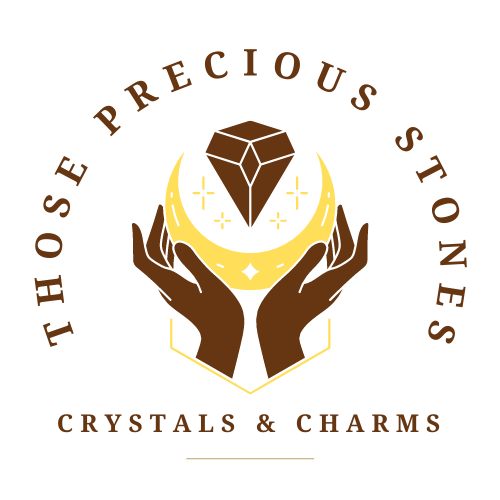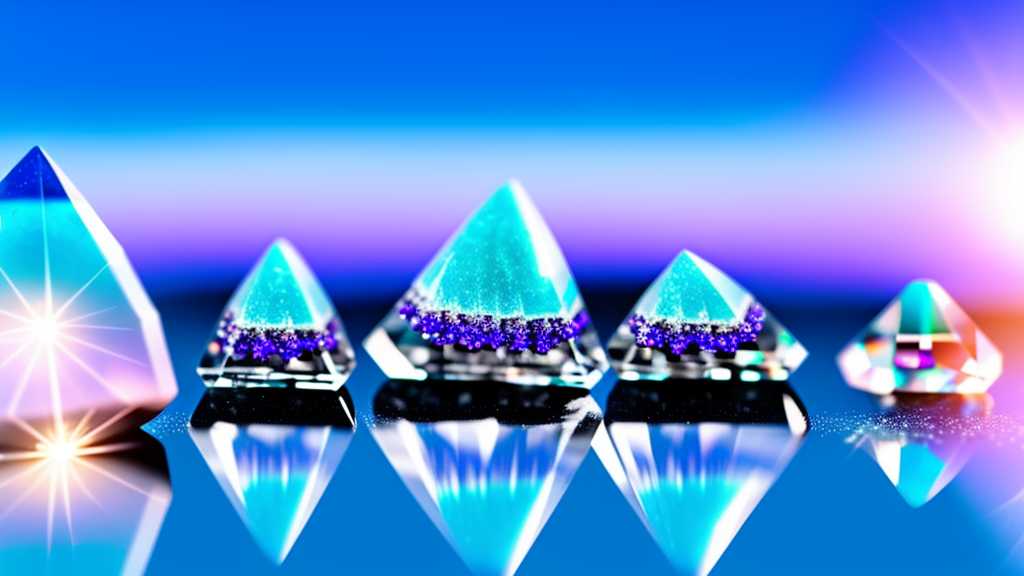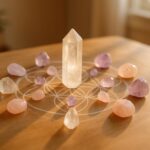Are Crystals Alive?
Okay, so imagine you’re hanging out with your friends, and one of them strikes up this mind-boggling question: “Are crystals alive?”. Now, that might seem a little out there, right? But seriously, think about it for a second before you start laughing. Can these dazzling inanimate objects indeed be ‘living things’? Yes, you heard me right, living things! While the idea might sound like something straight out of a sci-fi movie or a work of fantasy, it’s a question that does make sense when you dive a little deeper.
You’d think the answer is quite simple. I mean, come on! Crystals are hard, shiny, and well… brittle. Far from what we typically consider as ‘alive’. But, here’s where things start to get interesting. Remember in school when we learned about the fundamental characteristics of living things? Yeah, crystals weirdly seem to tick a couple of boxes in that list.
For instance, the essential functions of life include growth, movement, sensitivity, excretion, reproduction, nutrition, and respiration. Now, we know that crystals don’t breathe or eat, but they exhibit growth and movement, albeit in ways fundamentally different from what we’re used to seeing in living organisms.
Crystal Growth – A Spark of Life?
Crystals grow, but not in the same sense that a plant does. When placed in the right conditions, crystals can absorb atoms from their surroundings and incorporate them into their structure, effectively growing in size. This process is known as ‘nucleation’ and ‘crystal growth,’ and it bears a strange resemblance to the way organic life forms grow.
Plus, as weird as it sounds, crystals kind of ‘move’. No, they’re not pulling off epic dance moves, but they vibrate on a molecular level. In response to changes in environmental factors like temperature and pressure, crystals can manipulate their molecular structure, kind of like how plants move towards the sunlight, a phenomenon known as ‘phototropism’.
Can Crystals Reproduce?
Now here’s the real kicker – can crystals reproduce? It sounds bizarre, right? Well, they can’t make mini-crystals the way animals do, as they lack biological systems for that. However, under the right conditions, a crystal seed or ‘daughter crystal’ can grow from a ‘mother crystal’. This ‘reproduction’ process is actually more similar to cell division in living organisms than you’d initially think.
Alright, I know what you’re thinking – is this just an extraordinary coincidence or is there more to it than what meets the eye? It’s fascinating to look at crystals from this living-things perspective, isn’t it? However, diving into the mysteries of life requires more than just drawing parallels in growth and reproduction.
In the next part of this exploration, we’ll look into other factors that define life and see where crystals stand. When it comes to the idea of crystals being alive, are we uncovering a hidden truth, or are we merely weaving a web of fascinating speculation? Stay tuned as we plunge deeper into this sparkling debate!
The Living Matrix of Crystals
Hang on tight as we continue our dive into the mysterious realm of crystals! What do you reckon, are they living things or merely fascinating stones with unique properties? We previously examined how crystals display growth and movement, quite similar to organic life, albeit on a molecular level. But as we steer further into our exploration, we cannot ignore another critical aspect of living things – reproduction. Can crystals in fact, reproduce? You may just be surprised!
Break it down: Crystal Reproduction
Did you ever think you’d catch yourself contemplating if crystals can reproduce? If you asked a crystal this question, it wouldn’t giggle or roll its eyes in denial. Well, it wouldn’t do that anyways, it’s a crystal after all! However, your question isn’t as absurd as you might think. You see, the process of ‘reproduction’, as associated with crystals, is somewhat different than the biological reproduction we humans share with the animal kingdom.
- Crystal “offspring” – In conditions that favour crystal formation, a main crystal or ‘mother crystal’ can initiate the growth of smaller crystals, referred to as ‘daughter crystals’. This process, astonishingly similar to the biological cell division, demonstrates the crystal’s ability to ‘reproduce’ in its own unique way.
Does this anomaly somehow prove that crystals are alive? Well, not quite. Although these characteristics of growth and reproduction genuinely show an uncanny resemblance to life as we understand it, they do not conclusively categorize crystals as living things.
Navigating the Characteristics of Life
Let’s revisit those fundamental characteristics of life we learnt about in school, shall we? These are:
- Growth – We’ve established that crystals can grow, albeit not in the traditional sense we’re used to. Their development involves intake of atoms from the surrounding environment.
- Movement – Crystals can ‘move’ on a molecular level, manipulating their structure in response to changing external conditions.
- Reproduction – Although crystals cannot reproduce biologically, they can form ‘daughter crystals’ under the right conditions.
Certainly, it’s rather evident that crystals show some aspects traditionally associated with life forms. However, crystals fall short when considering other characteristics like sensitivity, nutrition, excretion, and respiration. They don’t breathe, digest, respond to stimuli or excrete waste, fundamental requirements for anything to be categorically considered alive.
So, where does that leave us in our query if crystals are living things? Their capacity to grow, exhibit movement, and even ‘reproduce’ in their unique way aligns them somewhat with life, but their inability to perform the other essential functions of life holds us back from claiming them to be living.
Crystals – Lifeless Brilliance?
After going on this exciting exploration, it appears as though crystals occupy a fascinating middle ground in the context of life – not quite inanimate, but not quite ‘alive’ either. They shimmer at the crossroads of liveness and inanimateness, exhibiting features of life while lacking others. Regardless, the question ‘Are crystals alive?’ continues to captivate our curiosity, offering a sparkling cocktail of marvel and mystery. Indeed, crystals, you are one of a kind!
The Life-like Dance of Crystals
My friends, we are on the voyage of unearthing the mystery of crystals, whether these gorgeous stones can be considered alive or not. Let’s admit it, we’ve been intrigued by the sheer brilliance of these gemstones and their uncanny similarities with life itself, reflecting through their inherent ability to grow, move, and even reproduce!
A Peek into the Ballet of Crystals
Imagine this, a crystal ‘dancing’! Well, not the kind of dance you might be picturing. What I’m referring to is the molecular show these crystals put up. They don’t have arms or legs, of course! However, they do have a unique routine of movement where they vibrate and alter their molecular structure in response to the whispers of their environment, akin to how trees lean toward the sunlight to maximise their intake of radiant energy.
Crystals – The Miraculous Creators
Just when you thought we’ve exhausted the surprising traits of crystals, they throw us another curveball – reproduction! Yep, you read it right, these seemingly lifeless stones have found a way to mimic one of the most critical characteristics of life. When everything is just right, a ‘mother crystal’ can actually spawn a ‘daughter crystal’. I know, it’s not conventional reproduction like how cats have kittens, but it’s eerily similar to cellular division in biology. Take that for a fascinating fact!
Although these characteristics might seduce us into believing that crystals are alive, we must remember that exhibiting traits of life doesn’t necessarily mean that an object is ‘living’. There are other boxes that need to be ticked.
Where do Crystals Stand in the Landscape of Life?
Let’s take a stroll back to our school days when we learned about the cardinal traits of life. They involved growth, movement, reproduction, and a few others which included sensitivity, nutrition, excretion, and respiration. Racking our brains, it becomes apparent that crystals manage to fit the first three to some extent.
- Growth – Crystals grow, maybe not like a daisy, but they accumulate atoms from their surroundings, increasing in size.
- Movement – They dance on a molecular stage, tweaking their structures when faced with changes in their environment.
- Reproduction – In a unique manner, crystals reproduce, forming daughter crystals under the right circumstances.
However, crystals miss the mark when you consider the remaining characteristics. They don’t eat, breathe, react to stimuli, or even get rid of waste, things that living beings do. So, although they exhibit some traits of life, sadly, they can’t be christened as ‘alive’ under our current understanding of life.
Crystalline Enigma- Life or Not?
Our journey has led us to an intriguing gray area where crystals juggle on the tightrope of life. They possess traits that align with living beings, yet they are deficient in others. They glitter at the intersection of being and not being, blurring the boundaries themselves. And the query ‘Are crystals alive?’ continues to stir up our minds, tickling our curiosity. Regardless of anything, one thing is for sure – crystals, you truly are the enigmatic marvels of nature!







